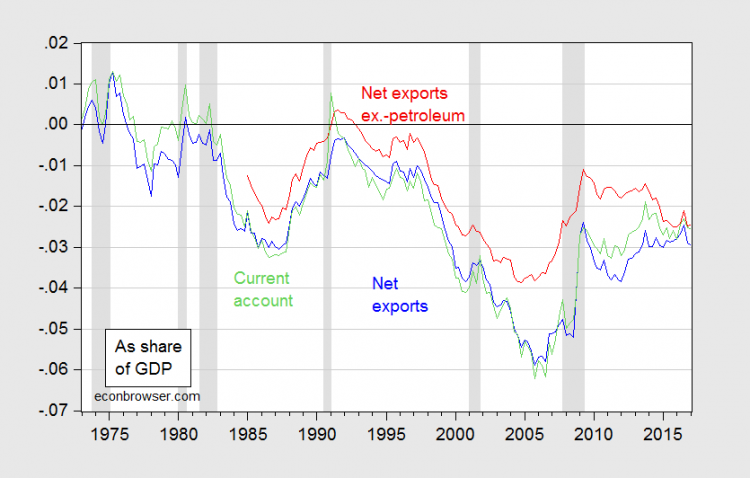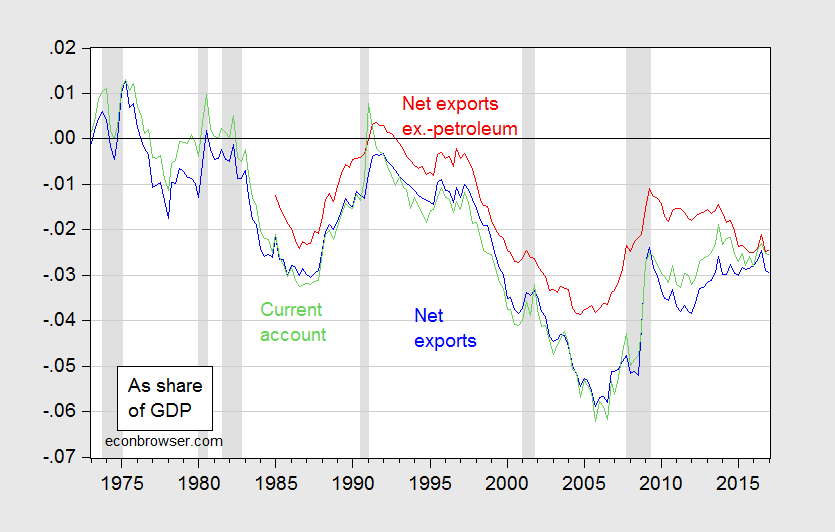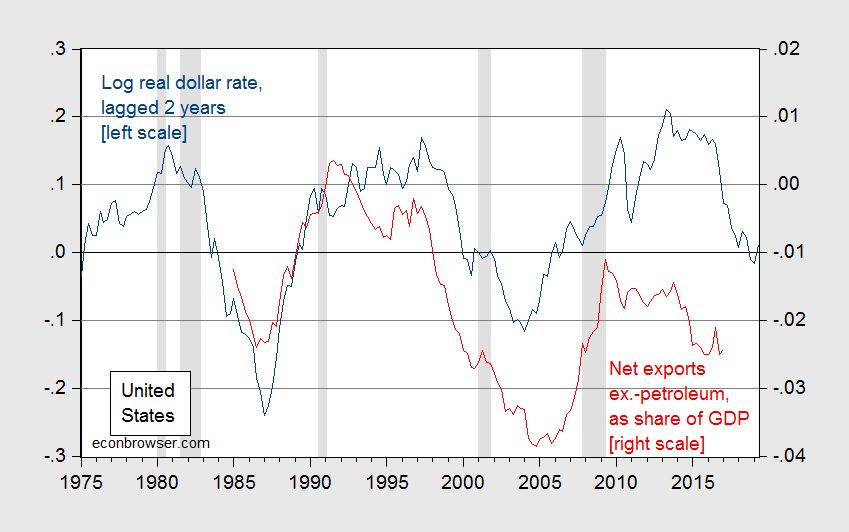
Well, I don’t think a few tariffs and quotas, plus “tweaking” Nafta, are going to do it. And blowing a hole in the Federal deficit ain’t likely to help.
First take a look at the trade deficit as defined in the national income accounting sense (i.e., “net exports”), expressed as a share of GDP:

Figure 1: Net exports (blue), net exports ex.-petroleum products (red), and current account (light green), as a share of nominal GDP. NBER defined recession dates shaded gray. Source: BEA, 2017Q1 3rd release and author’s calculations.
Notice that net exports have improved since the onset of the Great Recession, in part because of slower growth, a depreciated dollar, and an increases in petroleum product exports (as highlighted by the fact that the ex-petroleum net export series moving closer to balance than the overall). The dollar’s value is one key factor in these movements. Below in Figure 2, the dollar exchange rate against a broad basket of currencies (defined such that a downward movement is an appreciation) is graphed, lagged two years, against net exports, ex-petroleum (under the presumption that exchange rates do not exert direct effects on oil prices which are denominated in USD).

Figure 2: Log US dollar exchange rate against a broad basket of currencies, lagged two years (dark blue), net exports ex.-petroleum products as a share of nominal GDP (red). Exchange rate defined as downward movement is a dollar appreciation. NBER defined recession dates shaded gray. Source: BEA, 2017Q1 3rd release and author’s calculations.
So, the question is whether trade measures will have a noticeable impact on the trade balance (this is a separate question from whether it’s welfare improving to impose such barriers). The answer depends in large part whether you think the impacts of US income and the dollar’s value (the two key variables) are going swamp any changes in relative prices coming from tariffs and quotas imposed at the sectoral level.
















